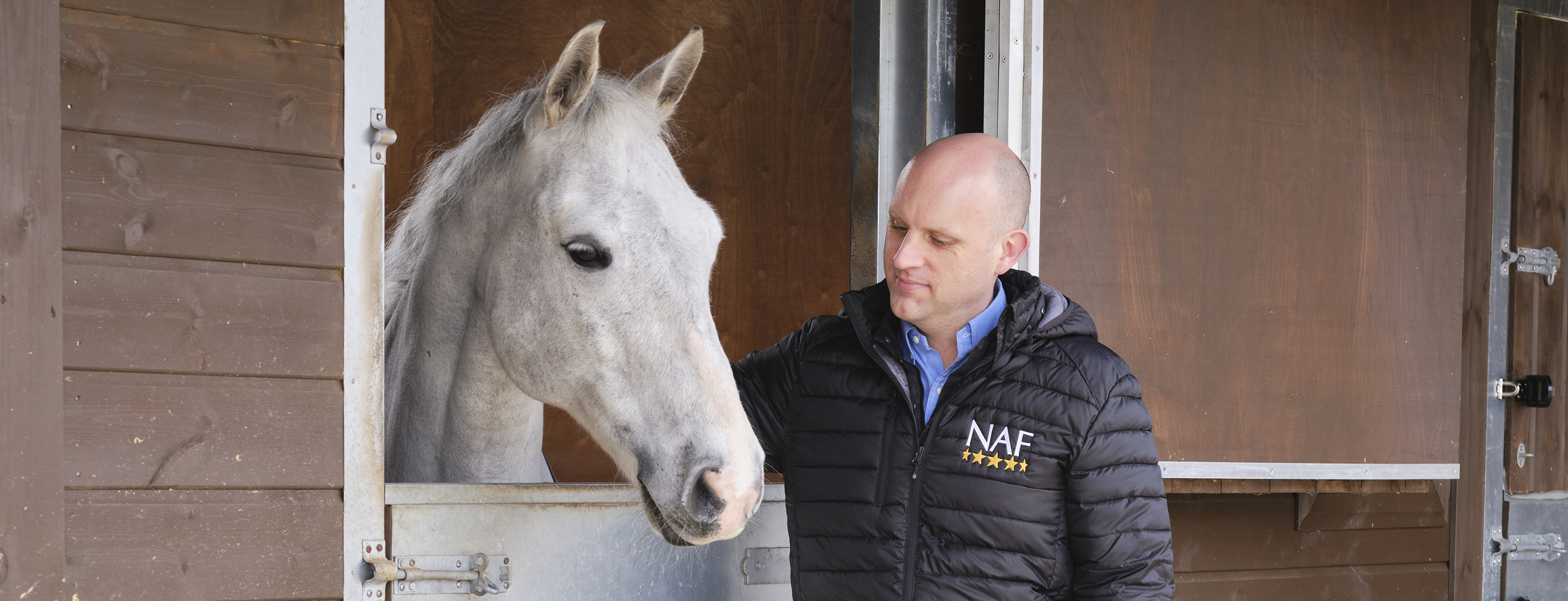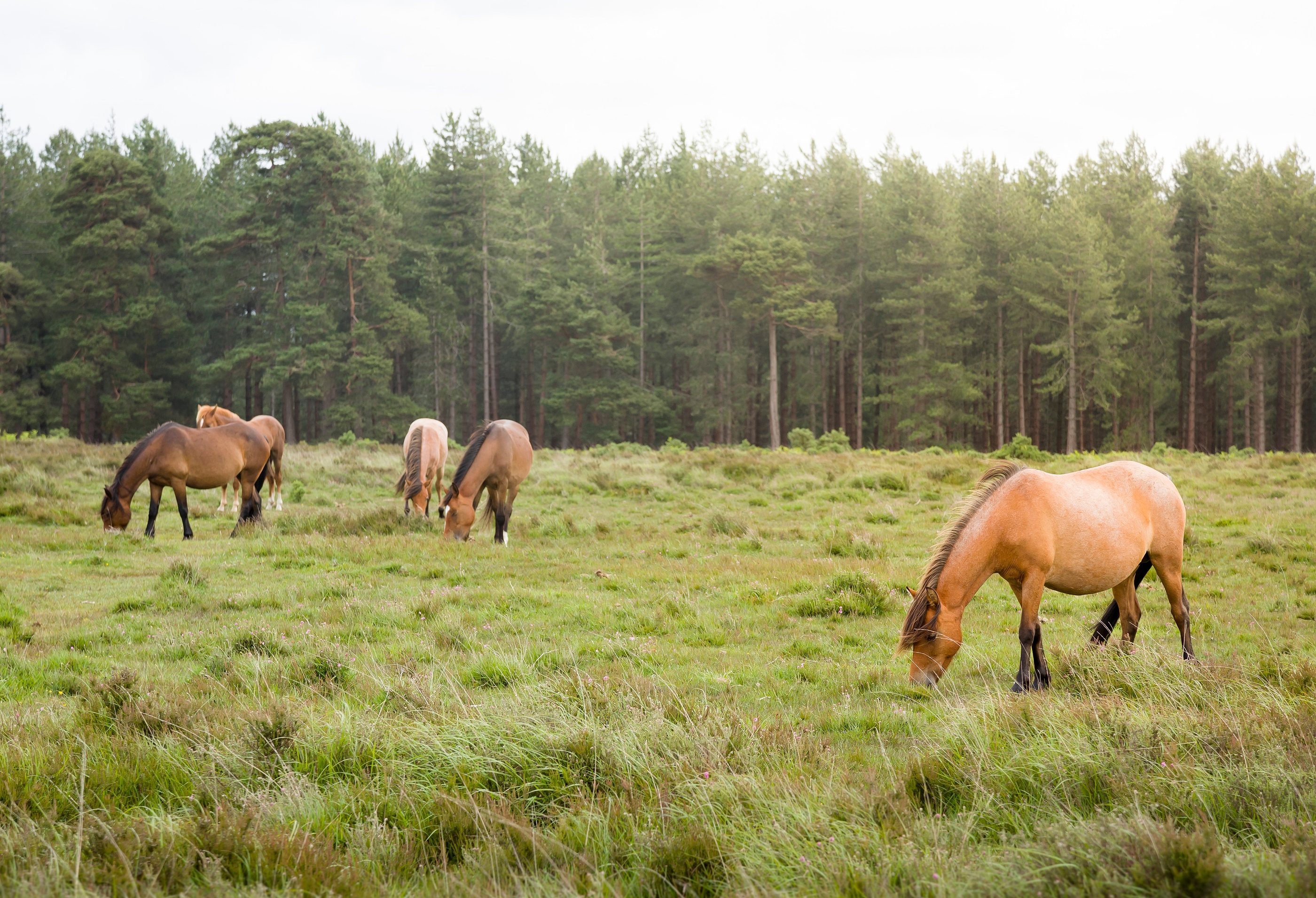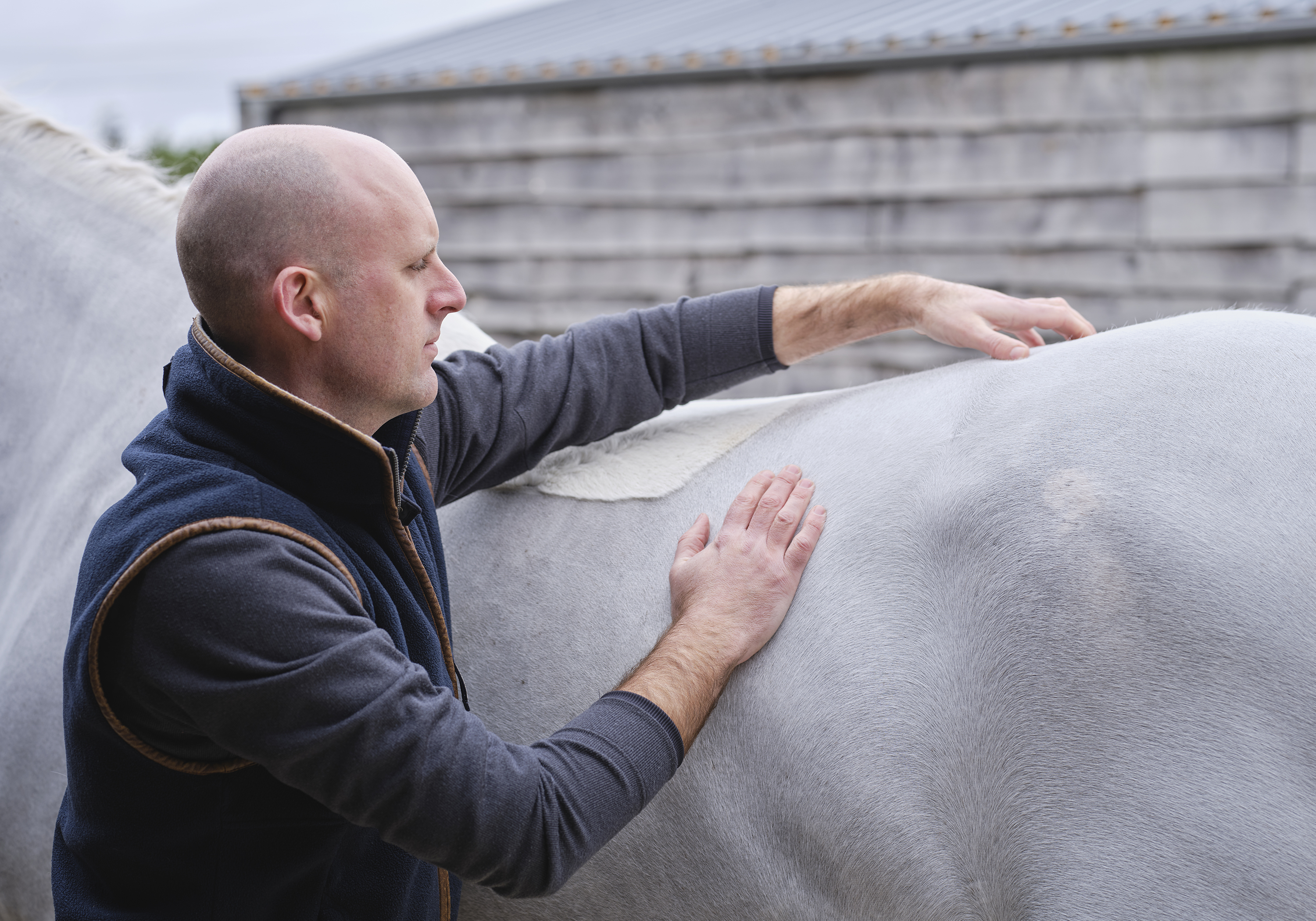
By Dr Andy Richardson BVSc CertAVP(ESM) MRCVS, NAF Veterinary Director

Freedom from pain is one of the 5 essential freedoms that all owners of animals must comply with by law1. Reducing pain to a minimum ensures animal welfare and provides an optimal environment for recovery from disease and injury.
However, in order to manage equine pain, we must first be able to accurately identify when our horses are showing signs of discomfort. Extreme pain may be obvious, but chronic low level pain can be much harder to identify but nonetheless have important welfare implications.
Recognition of pain in humans is of course helped by the ability of the patient to verbalise on the type, location and intensity of pain. This is clearly not a luxury we have in horses, which makes our ability to evaluate pain as vets and horse owners imperative, before appropriate treatment of pain can be started.
What is normal behaviour?
Diagnosing pain in horses is largely based on a subjective assessment of their behaviour. Therefore, it is very useful to first look at what are the normal patterns of behaviour in horses.

Horses are herbivores – grazing animals that originally lived in herds and relied on flight as their primary method of defence against predators. The herds survived by feeding on grasslands with roughage of low nutritional value. To evade predators, they relied on being extremely alert and living in groups of animals for mutual protection. Aggression between one another in these groups is minimal and mild, primarily based on subtle communication cues and displays of ritual. This was helped by herds having a well-defined dominance hierarchy.
In order to survive on poor quality grassland, the horse’s gut has developed to accommodate many hours of trickle feeding roughage with a low energy value. Horses would continually be on the move to seek out new areas of grazing.
Domestication of horses has required them to adapt, however many of their natural behaviours remain which is an important factor in helping us recognise when they may be in pain. For example, horses will raise their head often whilst eating from the floor, even when in the box, probably to allow a better line of sight to detect predators. In feral horses, pawing at the ground is used as a method to expose the roots of plants, where nutrients are more concentrated. A natural resting position for the horse is with their head lowered but ears forward or to the side. They will often rest one hindlimb and at the end of a resting period they may yawn or stretch. When they’re not resting or feeding, horses tend to be alert or on the move.
How to identify pain
In order to try and be as thorough as possible in evaluating pain in horses, it is useful to categorise pain under the following headings. Pain related behaviour is discussed in more detail below. Physiological parameters that can change when a horse is in pain are listed below but detailed discussion is beyond the scope of this article.
Pain related behaviour
In order to understand how pain influences behaviour in our horses, we must first answer the question of what is the point of pain? Pain can be characterised as acute or chronic.
Acute pain (recent onset/short term, often higher in intensity) serves to cause an animal to withdraw from activity in order to reduce further injury, for example a fracture causes a horse to refrain from undue movement in order to reduce the risk of making it worse. Pain also acts as a reminder to the brain to avoid that painful stimulus in the future to prevent recurrence, for example the way electrified fencing works.
The point of chronic pain (long term, often lower in intensity) is harder to define and may reflect an imbalance of the body’s natural pro and anti-inflammatory pathways. Chronic pain is much less useful to us as animals as it can interfere with the necessity to continue with our daily routine, including exercise. In horses, chronic pain is often the most difficult for us to recognise. Examples of conditions causing chronic pain would include gastric ulceration, dental pain, over-riding dorsal spinous processes and arthritis.
Horses in pain can exhibit general or more specific behavioural traits, or a combination of both.
General behavioural traits of horses in pain include2:
Specific behavioural traits, depending on the cause of pain, may include:
In addition to the above, there are also indicators of pain that are much harder to recognise. Although these behaviours may also be associated with non-painful causes, for example a young horse undergoing training, it is imperative as vets and horse owners that we always ask ourselves the question of whether pain is the underlying cause.
Examples of such difficult to recognise indicators of pain would include:
To re-iterate, these behaviours may not always have pain as the underlying cause, but pain should always be at least considered.
Evaluating Pain
So all of this discussion brings us back to the key question, how do I know if my horse is in pain? For many acutely painful conditions, it is obvious to an experienced horse person, vet or equine professional – for example the horse with laminitis that rocks back to redistribute weight off the front feet.
However, the many and varied causes of more general signs of pain, often chronic in nature, are much more of a challenge to recognise.

The first step should always be a consultation with your veterinary surgeon. A thorough examination is normally the starting point and having videos of your horse’s behaviour ready to show your vet can be very useful. More than one consultation may be required to help build up an accurate picture of the behaviours noted and potential causes. Further diagnostic tests such as nerve blocks, radiographs or other techniques may be required to narrow down the potential cause further. Pain-scoring scales can be useful to try and measure and monitor the severity of pain.
Another valuable technique is to use a short term pain-relief trial to see if that brings about a change in behaviour. This can vary from infiltrating local anaesthetic into a specific area such as a joint or back, and evaluating whether the horse’s behaviour is different immediately afterwards. Alternatively, your vet may recommend a period of oral pain-relief medication to also see if that changes behaviour over a longer period of 1-2 weeks.
Long term options
Many conditions have a specific treatment that will help remove or reduce the cause of pain from your horse. For example, the removal of a joint fragment via surgery or removal of a damaged tooth.
However, there are also conditions that require longer term pain relief as part of managing the condition. Examples would include arthritis or changes to the navicular apparatus.
There are also inflammatory conditions where appropriate exercise can be beneficial, if it can be achieved whilst maintaining an acceptable level of comfort. For example, horses with over-riding dorsal spinous processes (kissing spines) will often benefit from exercise to build up muscular support of the back, once any underlying causes have been addressed. These examples will often benefit from the judicious use of oral products that help maintain comfort.
The options for long-term pain relief include oral non-steroidal anti-inflammatory (NSAID) drugs such as phenylbutazone (‘bute’) or meloxicam. Long-term use of NSAIDs should always be considered carefully as they can be associated with unwanted side effects however, such as gastric ulceration, colitis and renal damage3.
Other options for long term relief include natural plant based anti-inflammatories that may have less associated side effects. Look for a veterinary recommended product that has preferably been independently trialled.
Selected References:
NAF © 2024 | NAF is a trading name of Greencoat Limited, registered in England & Wales. Greencoat Ltd - Registered address: Weston Centre, 10 Grosvenor Street, London, W1K 4QY. Registered Number: 1560 108. Registered in England & Wales.Number: 1560108 VAT Registration Number: 378 9295 80